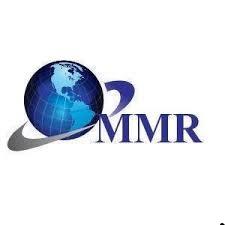In recent years, machine learning has emerged as a transformative force, reshaping the way we approach problem-solving and decision-making. From predictive analytics to image recognition, machine learning programs have become integral across diverse industries. This comprehensive guide explores the world of machine learning programs, examining their significance, various types, real-world applications, and the step-by-step process involved in creating and deploying them.
I. Grasping the Essence of Machine Learning:
At its core, machine learning is a subset of artificial intelligence that empowers systems to learn and improve from experience without explicit programming. It relies on advanced algorithms capable of identifying patterns in data, making predictions, and optimizing performance over time. Three primary types of machine learning include supervised learning, unsupervised learning, and reinforcement learning.
A. Supervised Learning:
Supervised learning entails training an algorithm on a labeled dataset, where input data is paired with corresponding output labels. The goal is for the model to learn the mapping between inputs and outputs, enabling it to make accurate predictions on new, unseen data.
B. Unsupervised Learning:
Unsupervised learning involves training the model on unlabeled data, allowing it to identify patterns and relationships within the data without explicit guidance. Common applications include clustering and dimensionality reduction.
C. Reinforcement Learning:
Reinforcement learning involves training a model to make decisions by interacting with an environment. The model receives feedback in the form of rewards or penalties, guiding it towards optimal behavior.
II. Diverse Types of Machine Learning Programs:
A. Classification Programs:
Classification programs, a type of supervised learning, train models to categorize input data into predefined classes or categories. This is widely utilized in applications such as spam detection, image recognition, and sentiment analysis.
B. Regression Programs:
Regression programs predict a continuous output based on input data, applicable in tasks such as predicting stock prices, estimating sales, or forecasting weather conditions.
C. Clustering Programs:
Clustering programs fall under unsupervised learning and group similar data points together based on inherent patterns. This is beneficial in customer segmentation, anomaly detection, and data exploration.
D. Recommendation Systems:
Recommendation systems utilize machine learning algorithms to analyze user preferences and provide personalized recommendations. Platforms like Netflix, Amazon, and Spotify rely on these systems to enhance user experience.
III. Real-world Applications of Machine Learning Programs:
A. Healthcare:
Machine learning programs are pivotal in diagnosing diseases, predicting patient outcomes, and personalizing treatment plans. They analyze vast amounts of medical data, including patient records and imaging results, to enhance decision-making in the healthcare sector.
B. Finance:
In finance, machine learning is applied for fraud detection, credit scoring, and algorithmic trading. These programs analyze extensive financial data to identify patterns and make informed predictions.
C. Marketing:
Marketing leverages machine learning for customer segmentation, targeted advertising, and personalized recommendations. Marketers use these programs to optimize campaigns and enhance customer engagement.
D. Autonomous Vehicles:
The automotive industry employs machine learning for developing autonomous vehicles. These programs enable cars to recognize objects, interpret road signs, and make real-time decisions, contributing to the advancement of self-driving technology.
IV. Steps Involved in Developing Machine Learning Programs:
A. Define the Problem:
Clearly articulate the problem you aim to solve with machine learning. A well-defined problem serves as the foundation for a successful machine learning program.
B. Data Collection and Preprocessing:
Collect relevant data for your problem and preprocess it to ensure cleanliness and suitability for training. This involves handling missing values, scaling features, and encoding categorical variables.
C. Model Selection:
Choose the appropriate machine learning model for your problem, considering factors such as data nature, dataset size, and desired output.
D. Training the Model:
Train the selected model on your labeled dataset, adjusting its parameters to minimize the difference between predicted and actual outputs.
E. Evaluation:
Evaluate the model’s performance using metrics such as accuracy, precision, recall, and F1 score to assess how well it generalizes to new, unseen data.
F. Fine-Tuning:
Iteratively fine-tune the model by adjusting hyperparameters and making improvements based on the evaluation results.
G. Deployment:
Deploy the model in a production environment, integrating it into your application or system for real-time predictions.
Conclusion:
Machine learning programs have become indispensable across industries, driving innovation and improving decision-making. Understanding the types of machine learning, their applications, and the development process is crucial for unlocking their full potential. As technology continues to advance, incorporating machine learning into your skill set is an investment in the ever-evolving landscape of technology and artificial intelligence. Whether you’re a data scientist, developer, or business professional, embracing machine learning contributes to staying at the forefront of technological advancements.




